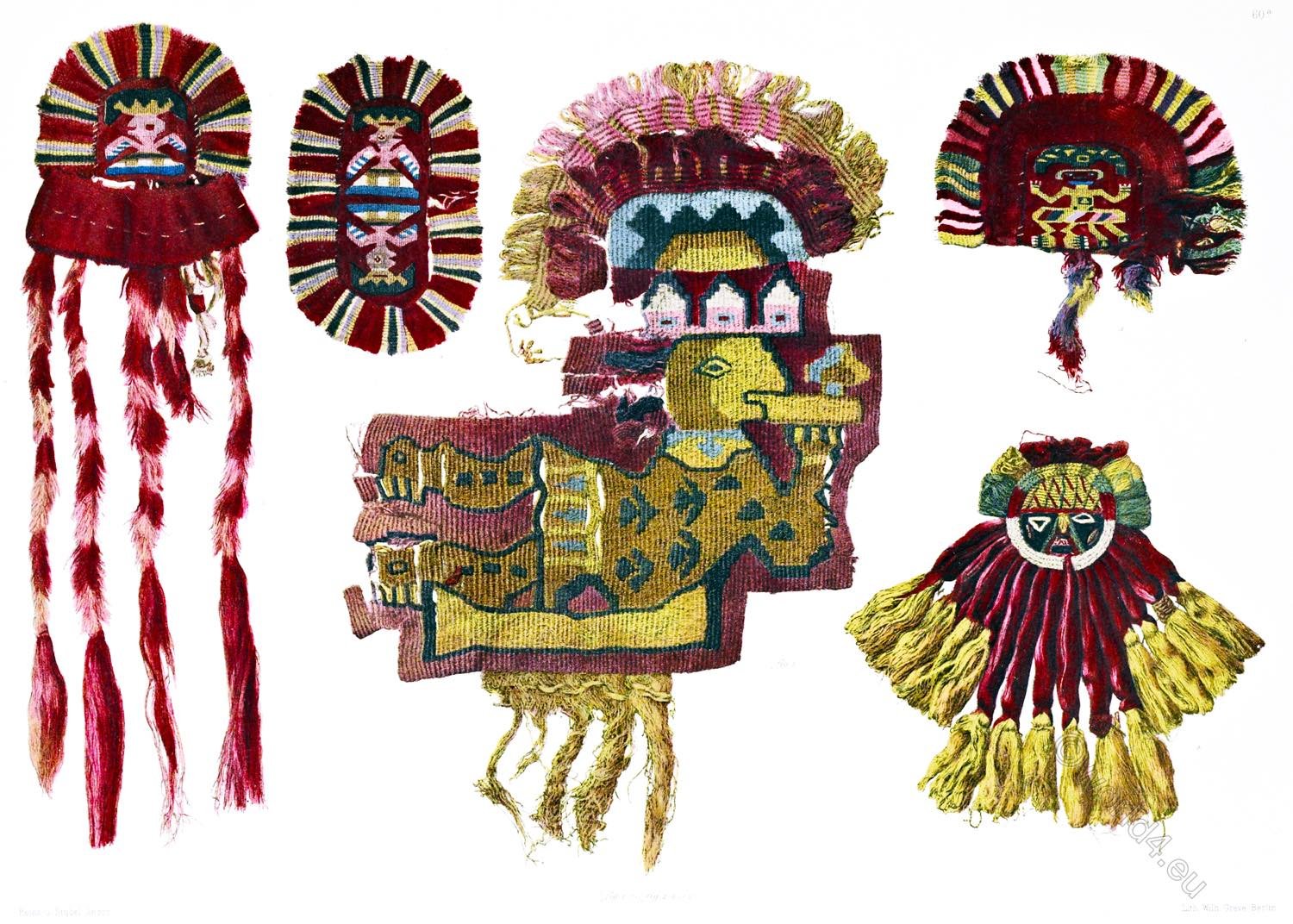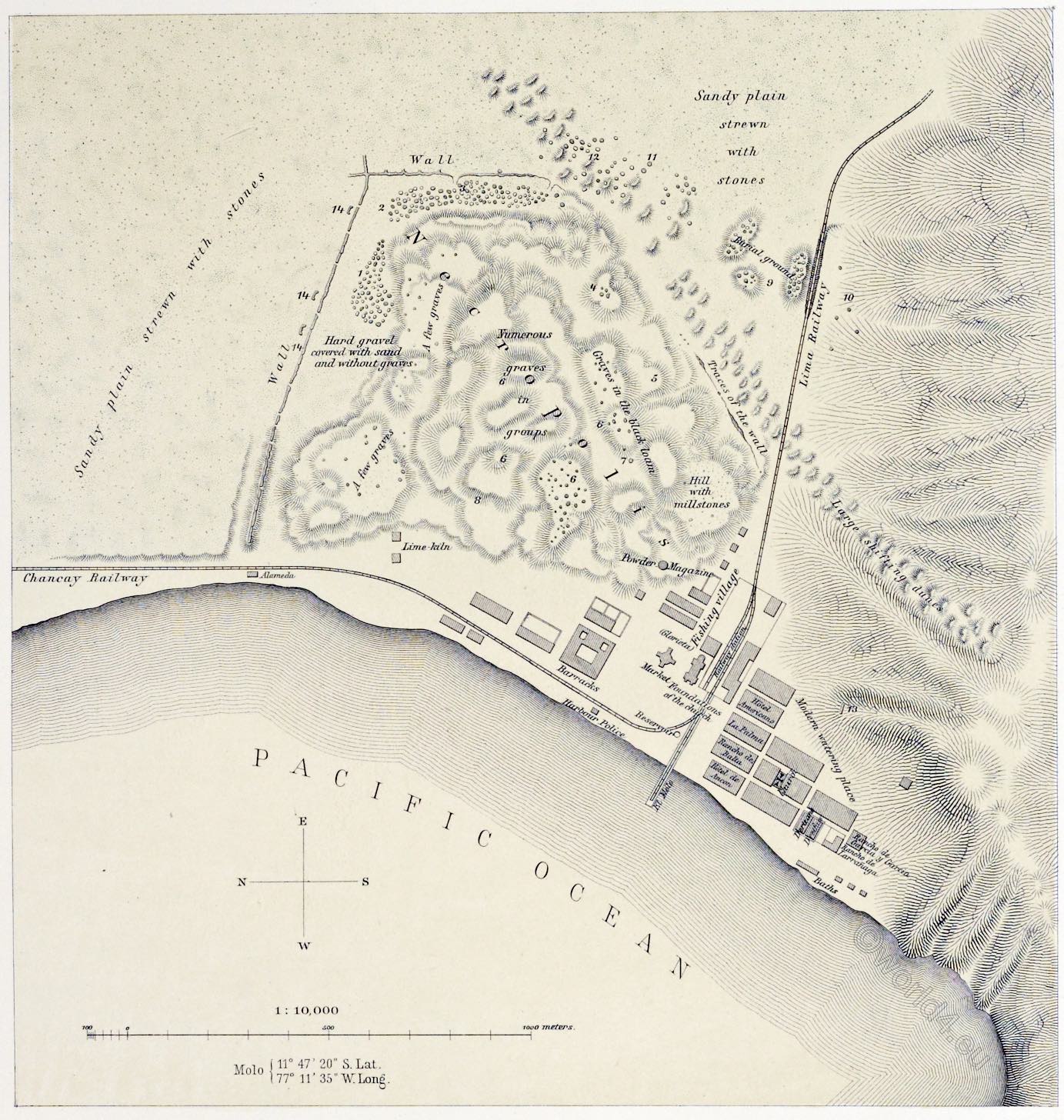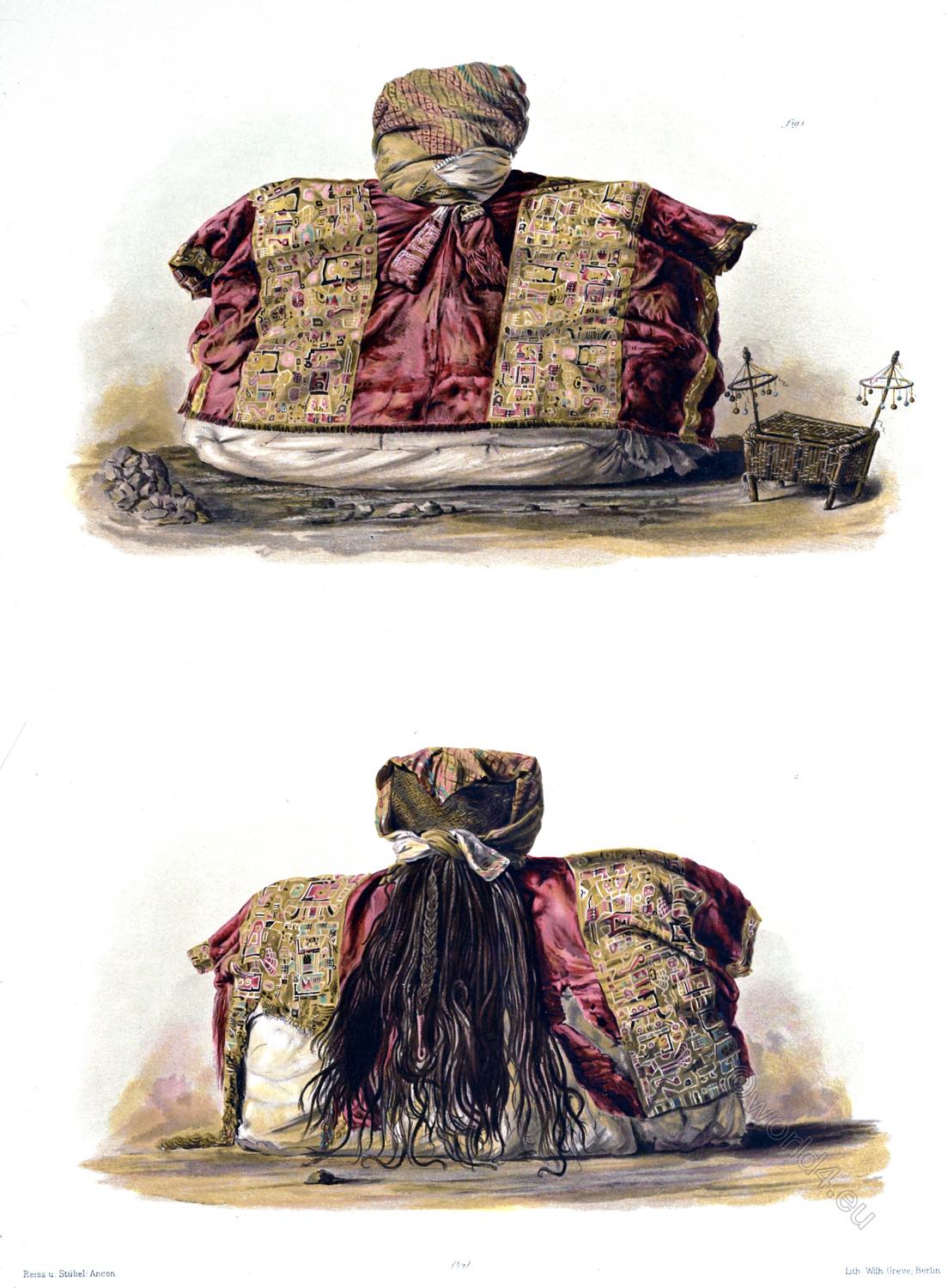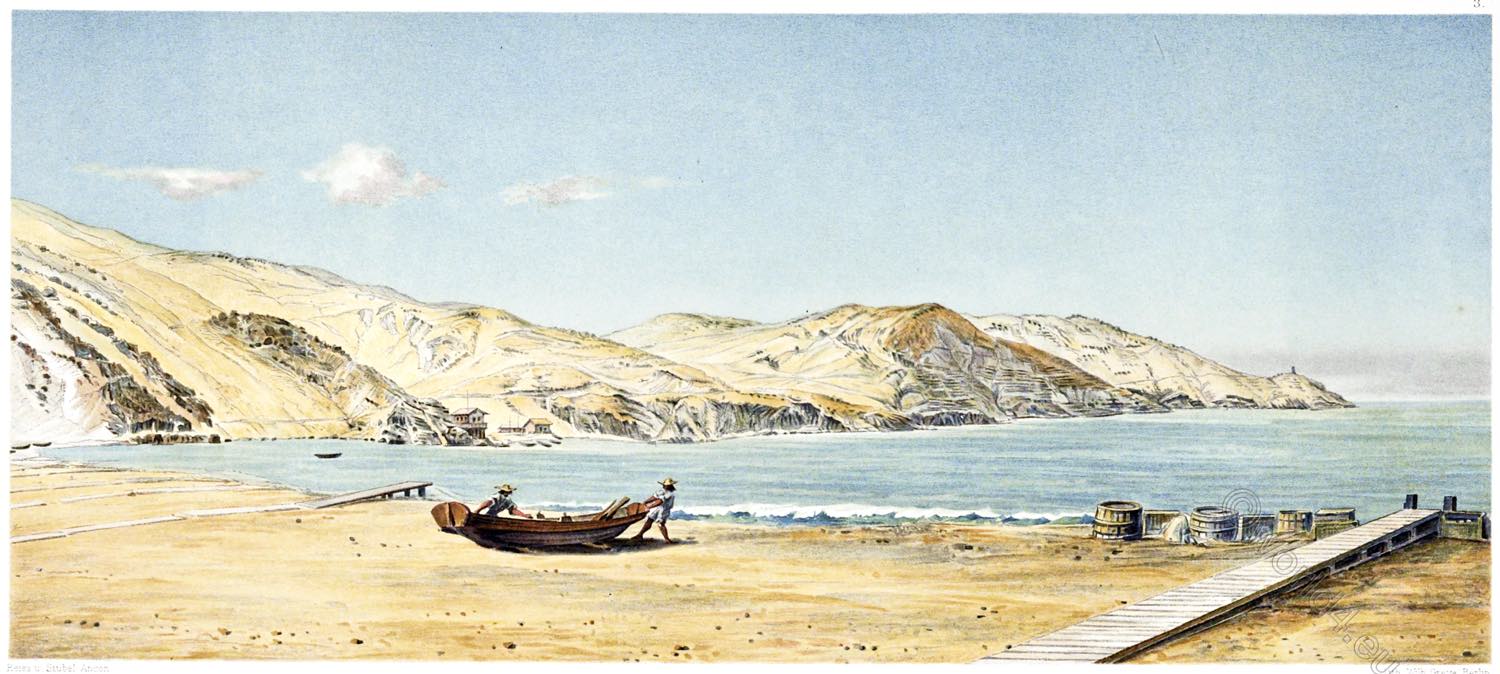
The archaeological complex of Ancon is located to the north of the bay of Ancon, on the central coast of Peru. It is one of the most important centres of Peruvian archaeology, where a vast necropolis from pre-Hispanic times stands out, with innumerable funerary contexts.
PLATE 60a.
PASSEMENTERIE WORK.
(Fig. 1 = 1/15 Figs. 2— 1 2 of the natural size.)
To the rich gauze-like garments with inserted passementerie work, a few examples of which were given on the previous Plate, belong also those articles of dress to the transparently woven ground material of which were sewed ornaments of a firm Gobelin’s type. Of other passementerie work there frequently occurred rosettes adorned with tufts and tassels, which were apparently fastened to garments, and to head or neck-bands. A long narrow article of attire prepared quite in this style has already been figured on Plate 43. Fig. 8.
Fig. 1. Gobelins ornament from a gauze-like garment. The design, mostly executed in various shades of yellow, stands out on the red ground of the somewhat irregularly fashioned piece. It represents a recumbent human figure with large head-dress disproportionately expanded by the attached borders. On a light yellow couch lies the figure clothed in a kind of shirt, the legs represented one above the other, one in fact suspended in the air. One arm alone is visible, its hand raising to the open mouth some article of a bracket type with a large object visible at one end. Both garment and legs are ornamented, and the ankles and three toes of the feet are indicated. A collar encircles the bare neck, and the hat- shaped head-gear is fashioned like that figured on Plate 51. Fig. 1. To the lower edge of the Gobelins material are fastened loose dangling fringes.
Fig. 2. Trimming of the flowing robe figured on Plate 43. Fig. 8. Here is reproduced on a larger scale one of the pieces of trimming attached to the lower end of the long stripe decorated with rich passementerie work. A square Gobelins-piece is edged on three sides by a border adorned with bright oblique stripes radiating from the central portion. To the lower edge of the main piece thus fashioned is applied a broad red border concealing the appended long twisted fringes. Each of these fringes bears at its lower end a smooth red tassel, and the small Gobelins-piece is embellished with a human figure exactly like that described in Fig. 4.
Fig. 3. Trimming like Fig. 2. Around three sides of a nearly square Gobelins-piece are applied and firmly sewed first two narrow red, then a wider brightly striped border. To the third side thus widened long fringes had been fastened, of which only a few remnants survive. On the red ground of the Gobelins-piece a human figure with large head-dress is represented, its legs disposed sideways in order to make room for the suspended ends of the waist-band.
Fig. 4. Trimming formed of a red Gobelins stripe of somewhat rectangular shape and encircled by an obliquely striped border. In the Gobelins-piece itself are interwoven two conventional human figures, whose feet are turned toward each other, and both of whom are decked with a large widely extended head-gear.
Fig. 5. Rosette-shaped trimming. A spherical surface edged with a many-coloured border represents a human figure, whose upper portion is encircled by a wreath of short diverse coloured fringes. To the lower side are attached loug red woollen fringes ending in yellow tassels. The central fringes are somewhat longer than those on either side.
Source: The necropolis of Ancon in Peru: a contribution to our knowledge of the culture and industries of the empire of the Incas being the results of excavations made on the spot by Wilhelm Reiss (1838-1908); Alphons Stübel (1835-1904), joint author; Wilhelm Greve, lithographer; Augustus Henry Keane (1833-1912), translator; Ludwig Wittmack (1839-1929); Rudolf Virchow (1821-1902); Alfred Nehring (1845-1904). Berlin: A. Asher & Co.; New York : Sole agent for America, Dodd, Mead & Company, 755 Broadway, 1880.
Discover more from World4 Costume Culture History
Subscribe to get the latest posts sent to your email.






